Menu
Growing African Violets Under Low Light: Symptoms?
What Happens When African Violets Are Not Getting Enough Natural Light?
- When African Violet plants do not receive enough sunlight there growth slows down.
- The leaf stems start to become elongated/leggy.
- The leaves start to grow upright/upwards as if trying to reach for the light.
- The plant will be eventually stop blooming and no new buds or flowers will emerge.
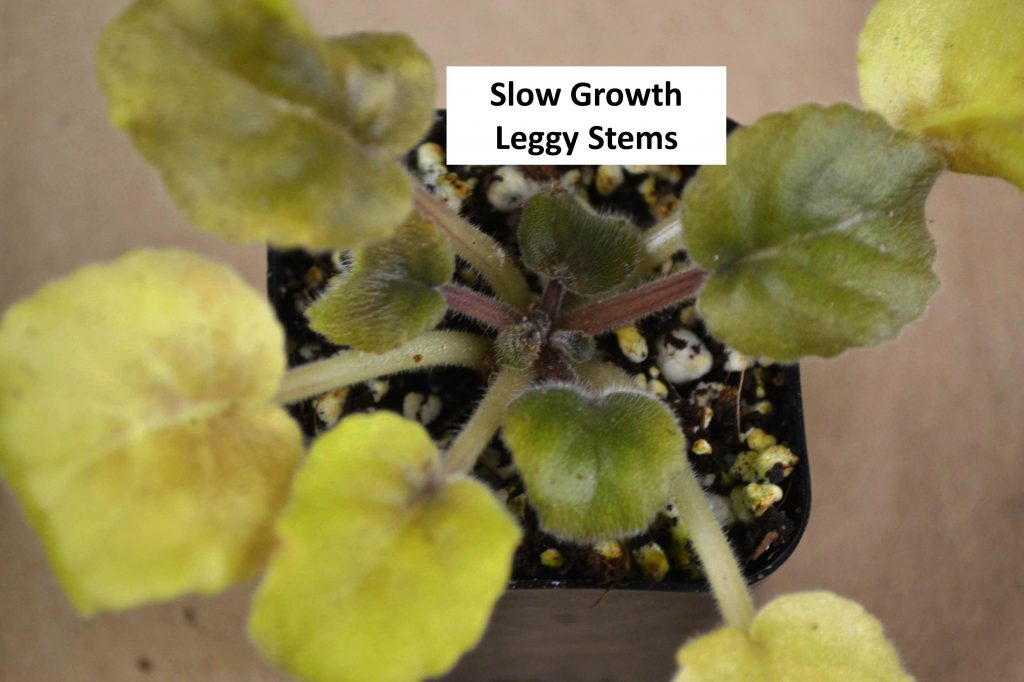
Why Is My African Violet Plant Leggy?
- African Violet plants become leggy when the light they receive is too low.
- The stems start growing longer in size and growing upwards as if they are reaching for the light.
- The leaves no longer grow flat as they usually should, but grow upwards too.
- This causes the plant to become top heavy full of leaves and just long stems at the bottom.
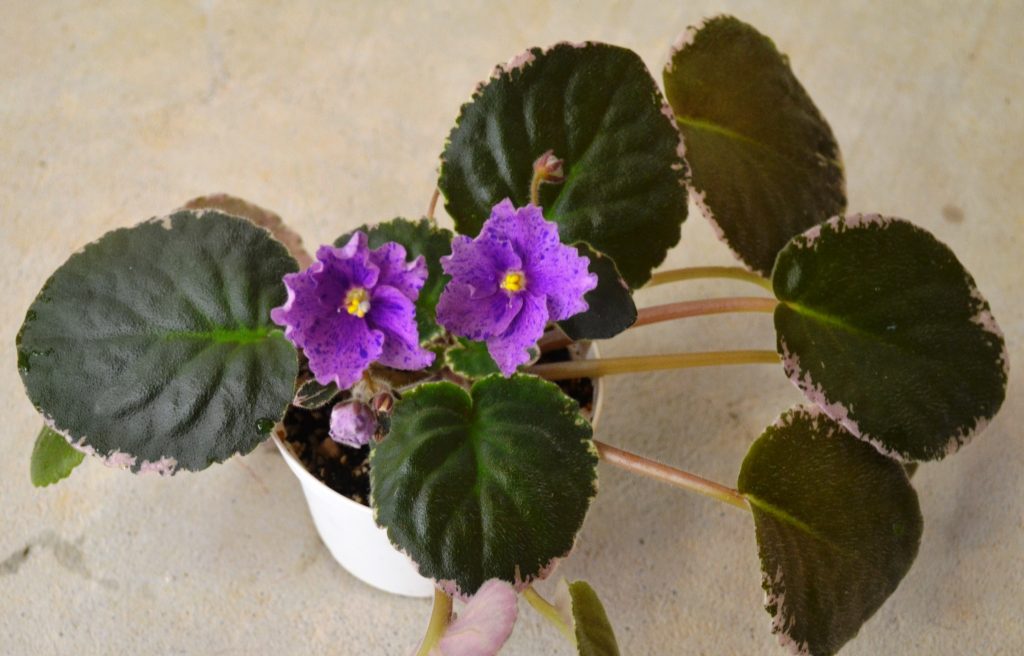
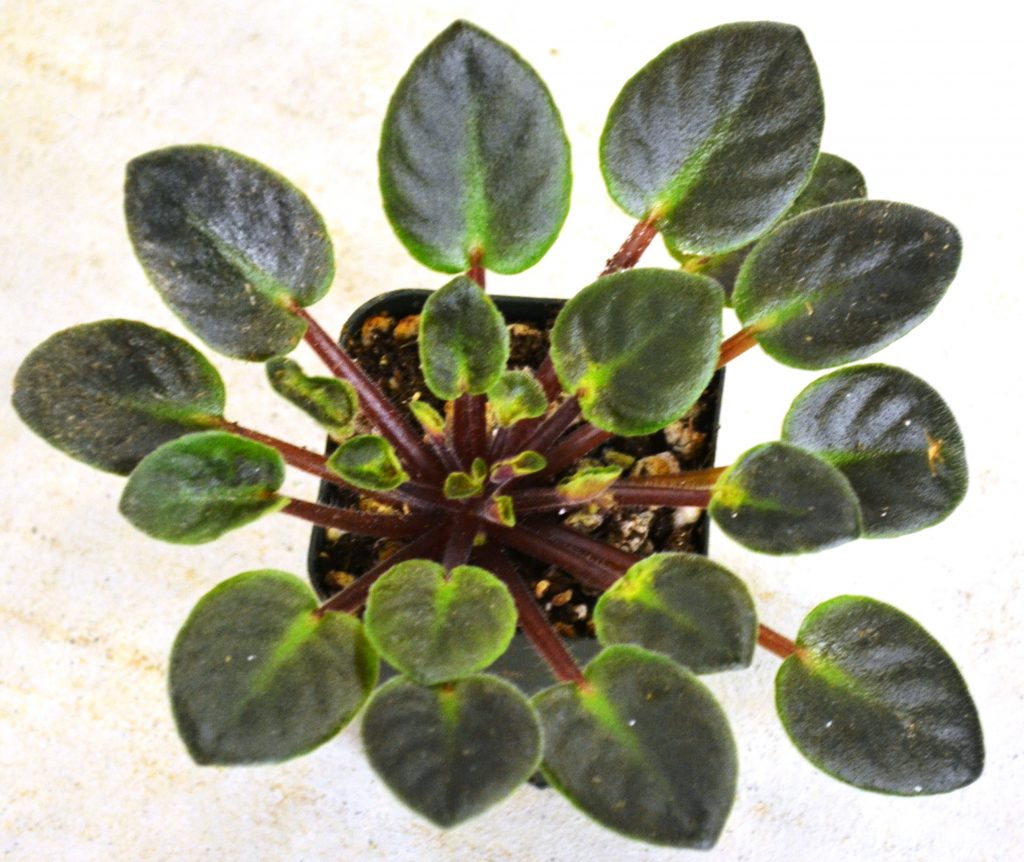
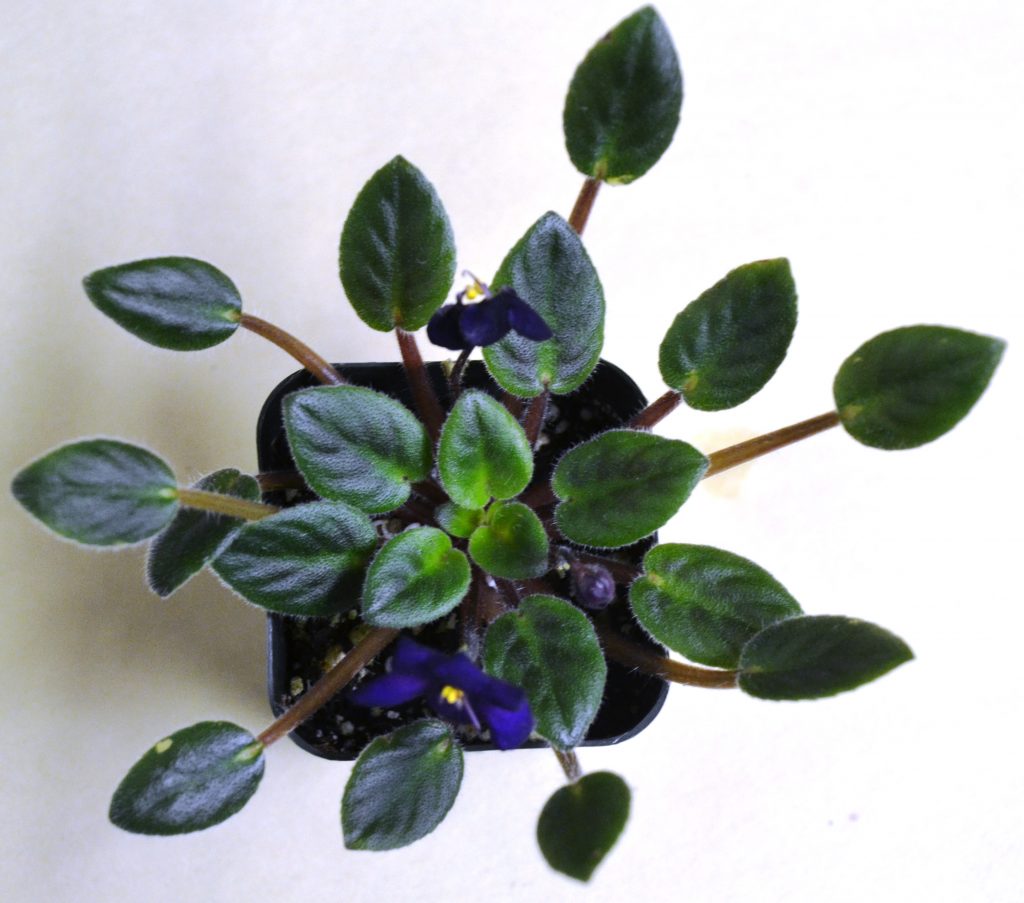
Why Are The Leaves On My African Violet Plant Growing Upwards?
- When African Violet plants are grown under low light the leaves start growing upwards.
- The leaves become thin in texture, deep green in color and the leaf stems become leggy and weak.
- When a plant grows normally, the rosette pattern of the inner leaves will cover the stems of the outer leaves.
- This way the stems of the leaves are barely visible in normal growing African Violets.
- However, under low light exposure, the stems appear “stretched” and further apart and become distinctly visible.
- For more information on rosette pattern of African Violets, can visit blog post, “What are the Different Types of African Violet Plants?“
Is My African Violet Plant Not Blooming Because Of Low Light?
- Low light exposure of African Violet plant will eventually cause them to stop blooming.
- The plant will first become leggy, weak and then slow down growth.
- Once plant growth slows down, new flower bloom growth also begins to slow down.
- In some cases, the plant may bloom, but only a low number of flowers and not profusely.
African Violet, perlite and other potting mixes shown below:
How To Control Natural Light When Growing African Violets?
- The best option when it comes to low natural light, is to move the plant to a location which receives indirect bright light.
- Remember to rotate or turn the African Violet plant a quarter-turn once a week to maintain their symmetrical rosette form.
- If a different location is not an option, you can move the plant slightly away from the window or natural light source.
- African Violets require at least 8hrs of light per day and at least 8hrs of darkness per night to thrive.
- For long lasting blooms, 12hrs a day of natural sunlight is ideal. African Violets need bright light during the day.
- For more tips on growing African Violets in natural light, can visit blog post, “Natural Light for African Violet Plants“.
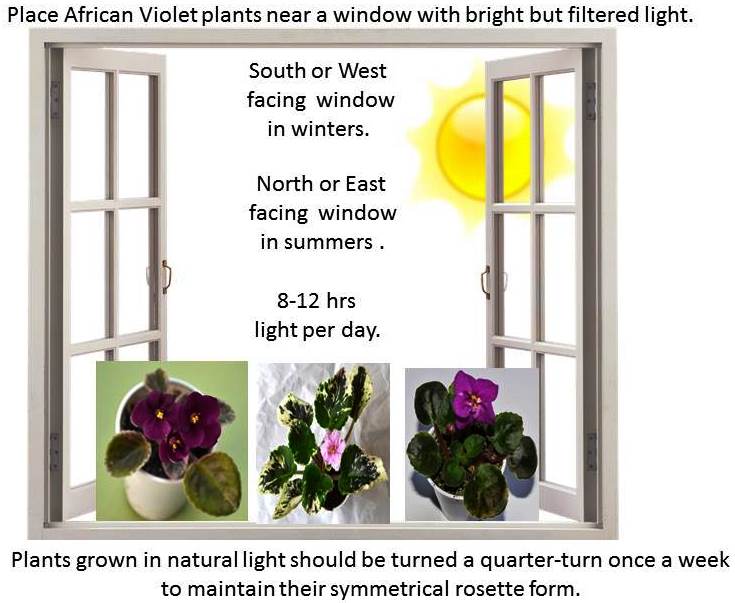
How To Control Fluorescent Light When Growing African Violets?
- If the light intensity is too low for your African Violet plants, you can move them closer to the fluorescent lights.
- Either move up the shelf or lower the lights down closer to the plants leaves.
- You can adjust the distance between the plant and bulb, till the plants starts to grow like a flatter rosette shape again.
- You can also move the plants towards to the center of the plant stand, as light intensity is stronger in the center of the fluorescent bulbs compared to the ends of the bulbs.
Will My African Violet Plant Die From Low Light Exposure?
- No, your plant will not always die from low light exposure.
- Certain times, if the light is low, the African Violet plant will adjust to these conditions.
- The violet plant may start to grow slightly larger leaves in size.
- The rosette shape of the plant wont be tight, the leaves will grow slightly apart from each other.
- However, other times, the plant growth will be stunted so much, that it will eventually lead to the plant dying.
- If your African Violet leaves are variegated, they require low light and can develop brown spots if grown under bright lights.
How many lumens of light do African Violets need?
- For African Violets to bloom they require from 5000 to 13,000 lux for at least 12 hours per day.
- One lux is defined as Lumens per square meter.
- An older plant needs between 10,000 and 15,000 lux to be happy.
- A younger plant needs less light from 5000 to 8000 lux.
- You can measure the amount of light your African Violet is receiving using a light meter or also downloading a light meter app on your phone.
Below are examples of light meters, useful to keep in your growing area, especially when monitoring low or bright light intensity.

*Our Affiliate Programs: We are a participant in the Amazon Services LLC Associates Program, an affiliate advertising program designed to provide a means for us to earn fees by linking to Amazon.com and affiliated sites.
Though we do link to many items on Amazon out of convenience to our readers, we do also participate in other affiliate programs that also pay us a commission for any purchases you might make through our links (at no additional cost to you!).
Like this article?
Share on Facebook
Share on Twitter
Share on Linkdin
Share on Pinterest

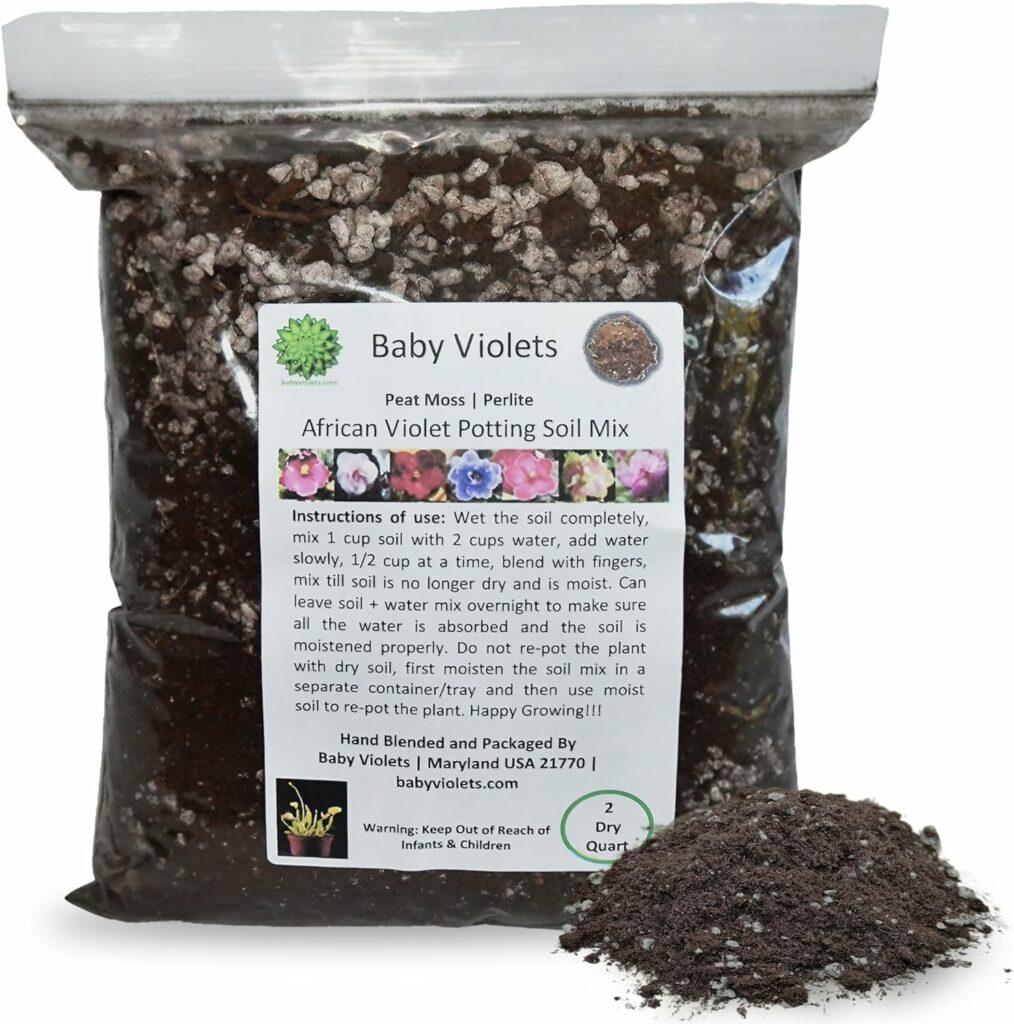




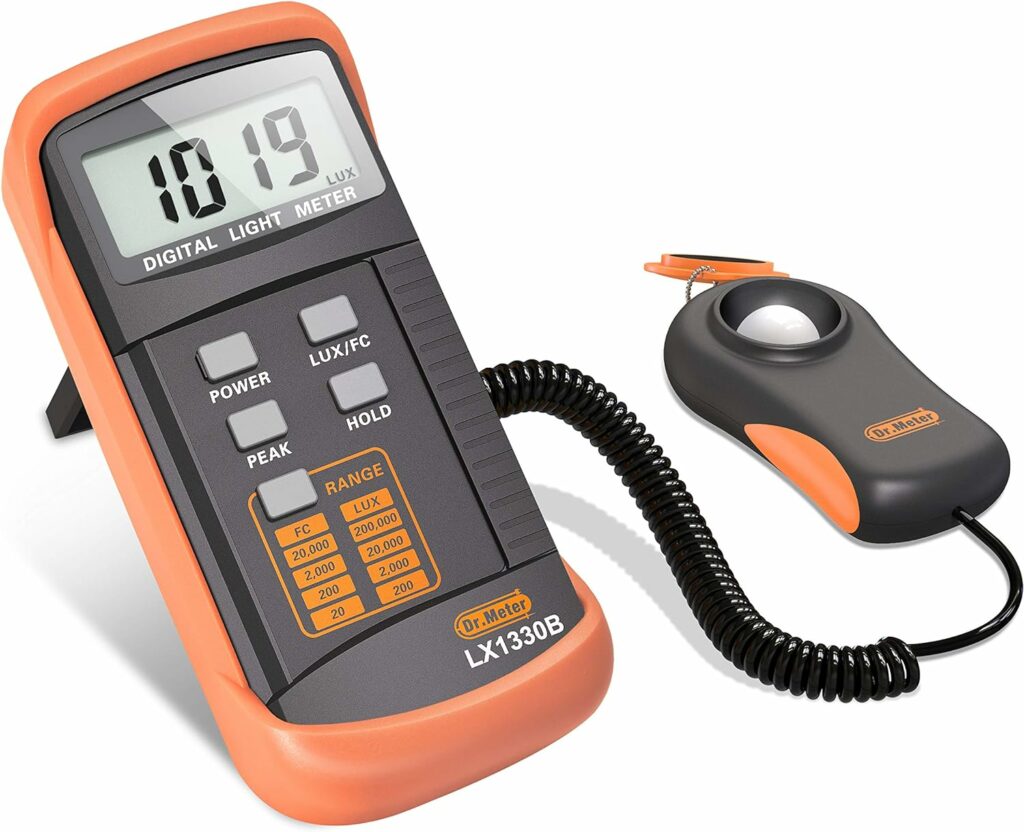

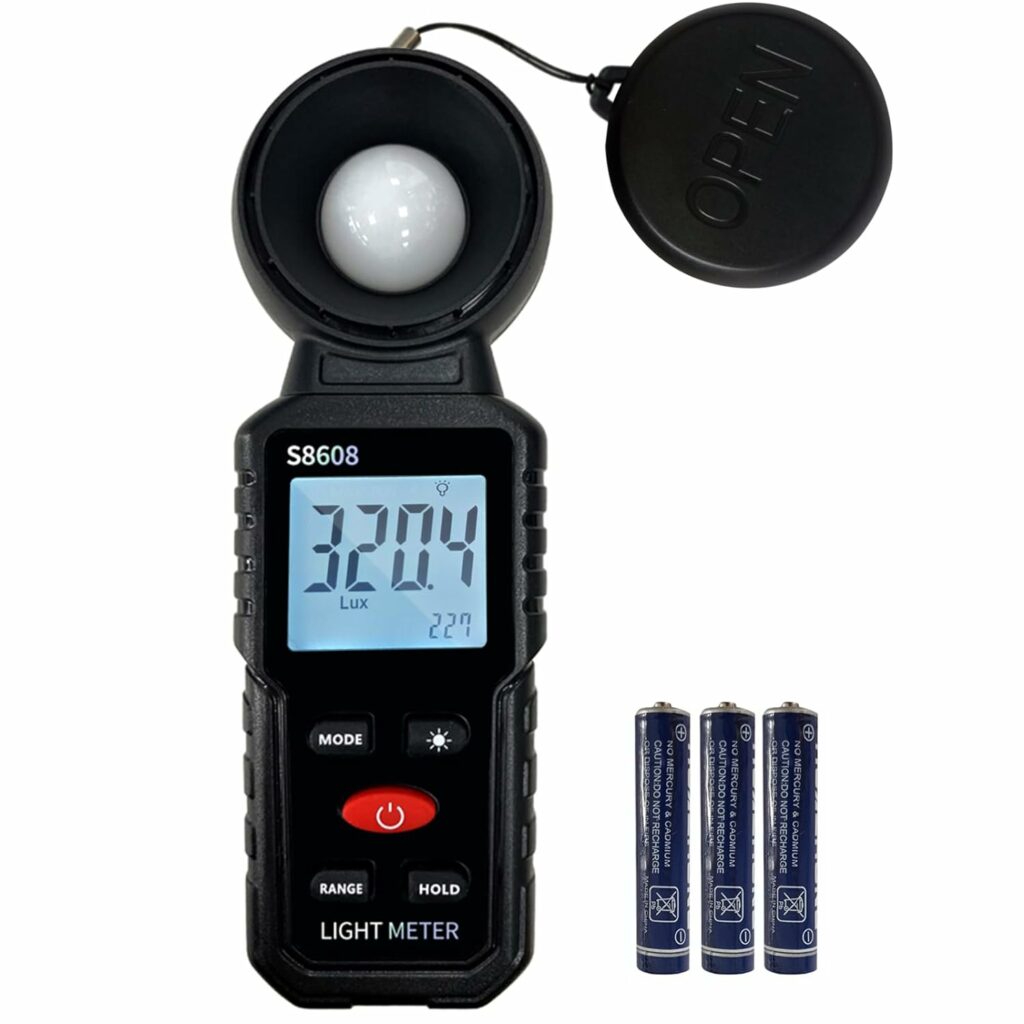

9 Responses
Thank you !
I have learned much from your articles
I would like to know how to properly remove the sports that show up under the leaves. If you have covered this issue I missed it.
I use cinnamon on any cut I make to avoid rot. Do you have an opinion about that. We used it on orchids when I worked at a nursery.
And finally I wonder if you have started leaves in spagnum moss? I have been playing around with it and the leaves seem to respond much quicker than in mix.
Sorry for the lengthy note.
L.Terrill
Hello Linda, thank you for your question. The sports which show up under leaves, sounds like suckers. There is a blog post on how to remove suckers from African Violet plants here : https://www.babyviolets.com/african-violet-suckers-what-are-they-and-removal/. It has general information about African Violet suckers and info on how to remove african violet suckers. I have not used cinnamon before, thanks for that tip, I will look into it for African Violets. I have not started leaves in spagnum moss, but have heard of some African Violet growers having quite the success in producing little baby plantlets. Please let me know if you have any other questions.
BV
I have been growing baby African violets from leaf cutting for over a year now. The problem is they are not growing in a rosette shape but rather a long neck shape. I suspect they haven’t received enough light. Is there a way to control their grow now or is it too late? They are about 3 inches tall now.
Thanks for any help you can give me.
Hello Laura,
thank you for your question. Yes, you can control the shape of the plant, you can rotate the plant every few days. This will help the leaves be exposed to sunlight evenly. If your plant is tilted in one direction, rotate it in the other direction, leave it for a week, see if the plant becomes flat / rosette shape. Then keep rotating the plant every few days, once its back to its rosette shape. If it has a really long neck, wait till the violet is back to its flat shape, after rotating it, this should happen. You will then have to scrape the neck, to clean the dead tissue/brown scabby tissue and re-pot the plant, covering the neck with soil. This article will be useful, http://www.babyviolets.com/how-to-bury-and-re-pot-african-violet-bare-stems-or-necks/. Hope this helps, regards, BV
I bought a grow light, to help my African violet. Will my plant recover from low-light upward reach leaves? Will the leaves eventually relax back down to normal? And will it bloom again? Thanks.
I hope the grow light is enough.
Hello James,
thank you for your question. Yes, the light should help the leaves from reaching upward. In 2-3 weeks the leaves will start to relax back down. Light alone may not change bloom production. If no blooms appear in 2-3 weeks after using a grow light, then you will have to wait till the temperatures get warmer. If you havent had blooms in a while, I would recommend fertilizing the plants, this optimara fertilizer (https://amzn.to/3oXUvCB) has worked wonders for me, I wished I had started using it earlier! In terms of blooms at least, the plant seems to be growing at the same pace. Hope this helps, regards, BV
Hi! My house has terrible light and my AV has started to show signs of this. Is there a grow light that you would recommend? Thank you!
Hi Jen,
thank you for your question. I personally use LED shoplights from Home Depot, as I have large stands of plants. For a smaller shelf or table, I would recommend these grow lights, they have a timer and emit natural sunlight like light, https://amzn.to/2TkDuVg and also https://amzn.to/3e2Y6ca, I personally do not have experience with these lights, saw a recommendation for these kind of lights on a violet forum a while back. Hope this helps, regards, BV